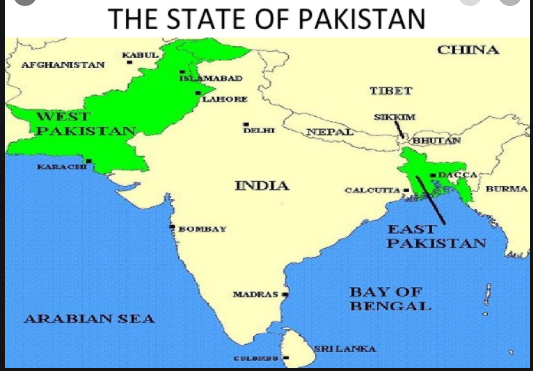Samson Simon Sharaf
This article was written immediately after the assassination of Salman Taseer in January 2011. Back then everyone tended to shy away but the editor of Nation showed character by publishing it. With slight modifications, this is a reproduction.
Ever since, the print media and socio-political landscape of Pakistan has gone from bad to worse. The Nation newspaper is no more the same. Just a question. Who runs the Nazaria-i-Pakistan Trust once headed by Late Majid Nizami?

That day, I had a discussion with Imran Khan. We agreed that forces of evil were taking over Pakistan. Perhaps we were the only ones who came out openly on media in Salman’s favour. Much later the courts acquitted Salman Taseer posthumously and the assassin was hanged to death. Though justice ultimately prevailed, nothing changed. At that time the world was shaken for Aasia Bibi because it suited them. Now it shakes and moves no more.
Like most Pakistanis, I was stunned by disbelief to see the breaking news of the late Salman Taseer’s assassination; Not that I am a fan but rather the direction in which Pakistan headed. Like every citizen, who still clung to Jinnah’s vision, I was disturbed and saddened by events that followed.
None could have articulated the direction that Pakistan headed, better than Imran Khan. In his interview to CNN he related this unfortunate event into cause and effect, “In fact Pakistan is imploding. This country is going down.” Rather than his usual dynamic and imposing demeanour, he appeared tense, grim and sombre; his face reminiscent of the first loosing matches of 1992 world cup reflected the concerns of every Pakistani: “Betrayal of Jinnah’s vision of a plural, progressive and communitarian society”. 13 years hence, he was right to the core.
The purpose of this article was not to write an obituary on Salman Taseer, but something far greater and of enduring significance: assess what lies ahead for Pakistan and in appraising the future course of Pakistan’s politic body. Hours after the assassination, I formulated a hypothesis and posted it on Facebook and Twitter. As Events have unfolded thereafter, my worst fears came true.
“Salman’s assassination is beyond symbolic. This is the start point of a struggle between the forces that bank on the establishment and mullahs for power and the true democratic forces within Pakistan. Does it bring to an end to the era of the Punjab Progressives like Faiz, Mian Iftikhar and Dr. Taseer, or will the pyre burn?”
Indeed, since that tragic day, Pakistan’s politics has taken a turn for the worst.
During the entire run up to the assassination, all political parties distanced themselves from the slain governor and left him alone with few civil activists, minority leaders and opinion makers. Even the ruling PPP hierarchy like Prime Minister and Babar Awan publicly distanced itself from the slain governor .
A large segment of the Rawalpindi Bar Association put its weight behind the assassin, garlanded, kissed and hugged him.
The governments in power at provincial and federal levels failed to take action against those who justified the assassination on religious grounds or offering head money on those condemned under PPC 295C.
The internet media flooded with admiration of the assassin. Facebook had numerous profiles and communities portraying him a knight.
Like the assassinations from Lt. Gen Iftikhar and PM Liaqat Ali in 1951, to the plane crash of the Chief Investigator of his murder, to Gen Zia Ul Haq’s crash to BB’s Murder in 2007, the security apparatus showed its low motivational state, lack of training and commitment and security of VVIPs.
Did all this happen overnight?
The story began with Jinnah’s plural Pakistan which was systematically replaced with political manipulations of religion to sustain the emerging political elites and the establishment. It began when Jinnah was abandoned on the roads of Karachi grasping for fresh air followed by insertion of the religious identity in the constitution. Religious forces that opposed the creation of Pakistan and supported the Khilafat Movement under Gandhi slowly began to overawe the Muslim League that created Pakistan and opposed the Khilafat. As time passed, numerous Muslim Leagues that were created to suit the establishments dishonoured Jinnah’s Pakistan and proceeded into short term expediencies that have now resulted in intolerance, violence and lawlessness.
As this trend spread, many members of the minority communities who worked in cahoots with Qaid e Azam Muhammad Ali Jinnah elected to either move back to India or to other countries. Even many war heroes who served Pakistan in its two wars emigrated.
Similarly, the uprisings in Kashmir had the intellectual, military and political inputs from men like Faiz Ahmad Faiz, Mian Iftikharuudin of Progressive Papers Lahore and Dr. Taseer. Pathetically, these heroes of the Kashmir struggle were thrown into cages by the dictators for conspiring against Kashmir and we in schools were forbidden from reading Faiz’ poetry. In yet another Shakespearean irony, a man who earned and paid honest taxes to Pakistan in its worst times, and one who turned anything he touched in business to gold and whose father acclaimed and buried Ghazi Alim ud Din in Lahore, himself fell to bullets and was labelled an infidel.
Pakistan was chosen as an Islamic Containment Bulwark against a so-called godless Russia during the Cold War. USA called Pakistan to an international Jihad against the infidel Soviets during the occupation of Afghanistan. The West and many Arab stated created the sectarian outfits to fail Iran’s Revolution. Tragically, at each occasion military dictators seeking legitimacy obliged and plunged Pakistan deeper into the militant syndrome. The present WOT serves to air and ignite these violent trends with the conclusion that any moderate who speaks up for Jinnah’s Vision is called an enemy agent, infidel, and traitor.
Are we headed towards a reassertion of our hard earned freedom or still consider ourselves as an indispensable ally, Ayub Khan called, “Friend not Masters”?
Jinnah’s Pakistanis has already lost space and slogan of Naya Pakistan is an anathema.








